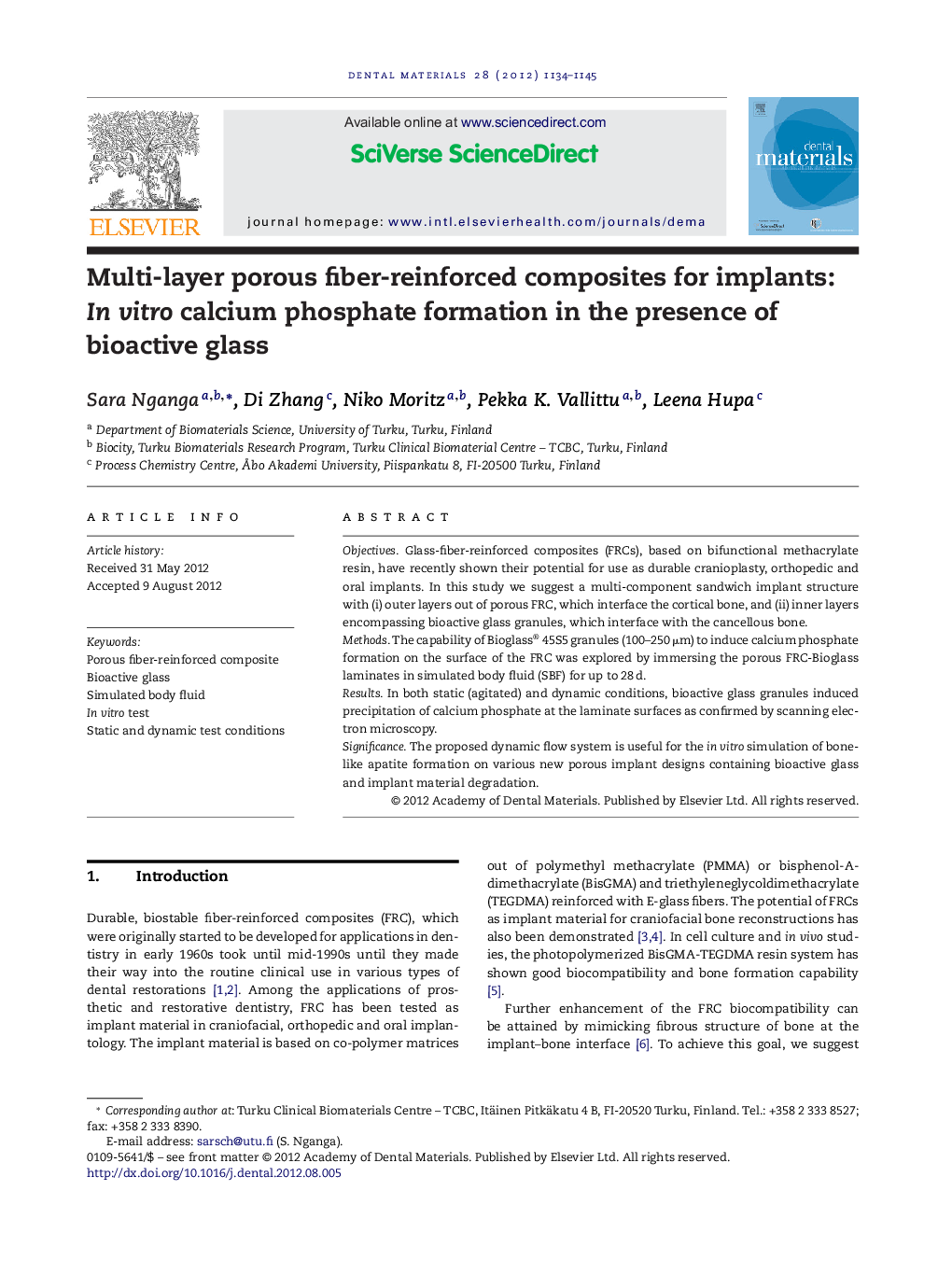| Article ID | Journal | Published Year | Pages | File Type |
|---|---|---|---|---|
| 1421475 | Dental Materials | 2012 | 12 Pages |
ObjectivesGlass-fiber-reinforced composites (FRCs), based on bifunctional methacrylate resin, have recently shown their potential for use as durable cranioplasty, orthopedic and oral implants. In this study we suggest a multi-component sandwich implant structure with (i) outer layers out of porous FRC, which interface the cortical bone, and (ii) inner layers encompassing bioactive glass granules, which interface with the cancellous bone.MethodsThe capability of Bioglass® 45S5 granules (100–250 μm) to induce calcium phosphate formation on the surface of the FRC was explored by immersing the porous FRC-Bioglass laminates in simulated body fluid (SBF) for up to 28 d.ResultsIn both static (agitated) and dynamic conditions, bioactive glass granules induced precipitation of calcium phosphate at the laminate surfaces as confirmed by scanning electron microscopy.SignificanceThe proposed dynamic flow system is useful for the in vitro simulation of bone-like apatite formation on various new porous implant designs containing bioactive glass and implant material degradation.
